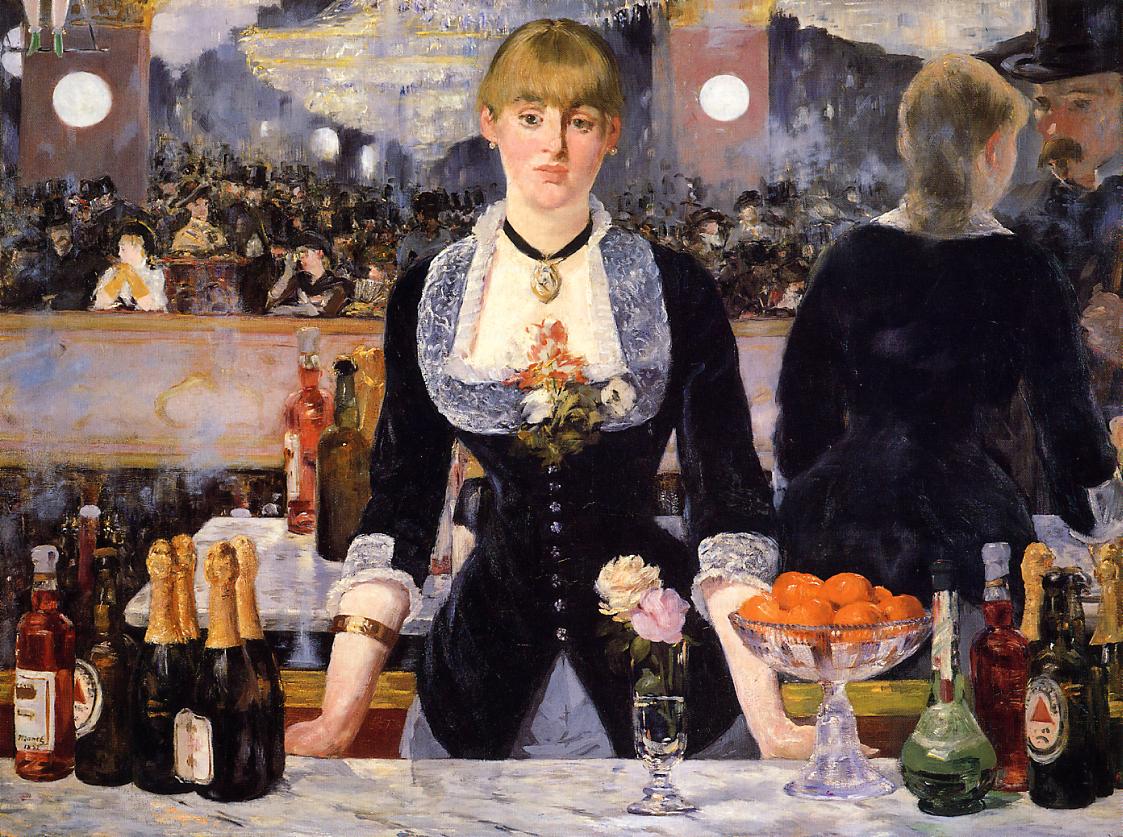With New Year’s Eve fast approaching and the season of drunken festivities reaching its climax, spare a thought for the bar staff of the world – as Edouard Manet did when he painted this week’s picture, The Bar at the Folies-Bergere, in 1882. It was Manet’s last painting and it remains his most intoxicating distillation of the giddy, fast-changing urban scene of late nineteenth-century Paris. The work forms part of the Courtauld Collection and can be seen at Somerset House.
The Bar at the Folies-Bergere is one of the most unsettling of the world’s great paintings, although at first glance it can come across as a rather warm and inviting image. An attractive and neatly dressed barmaid awaits her next customer – who is, by implication, the viewer of the picture. Her dark dress is trimmed with lace. She wears a bouquet of flowers in her bodice and a locket, strung on a black velvet choker, around her neck. Her hands rest on the polished marble counter where she mixes and serves drinks. She inhabits what amounts to a cornucopia of glittering, superficial pleasure. All around her are shiny containers of alcoholic consolation: bottles of champagne, whisky, crème de menthe, wine and also – a tribute to the export muscle of the nineteenth-century British brewing business – a couple of dark brown bottles of Bass Pale Ale, with its distinctive red triangle trademark on the label.
But attention is inevitably distracted from this enticing array of consumer drinkables by the devastating expression on the barmaid’s face. She looks up with weary detachment, ready to take another order; but behind her mask of forced, professional impassivity there is an expression of infinite sadness. It is reminiscent of the sadness seen in the face of the Virgin Mary in much older...


